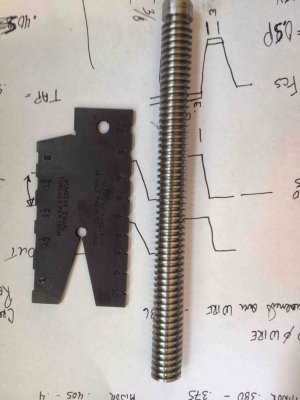F
f350ca
Forum Guest
Register Today
[FONT=Verdana, Arial, sans-serif]Im cutting a 1/2 - 10 tpi acme thread that will elevate the torch on a cnc table Im building . When I ground the cutter I got the tip width a little wide, closer to the width required for 9 tpi. According to the thread gauge I have. As a result at .055 inch thread depth (rather than .060) the pitch dia came into tolerance by the 3 wire method. Will that be a problem when I try to make the nut. Not sure if I'll make a tap or try to single point the nut.[/FONT]

If I drill the pilot hole for the female thread 10 thou over will that correct the shallower root on the male thread?


If I drill the pilot hole for the female thread 10 thou over will that correct the shallower root on the male thread?


